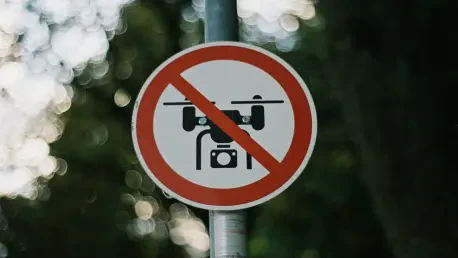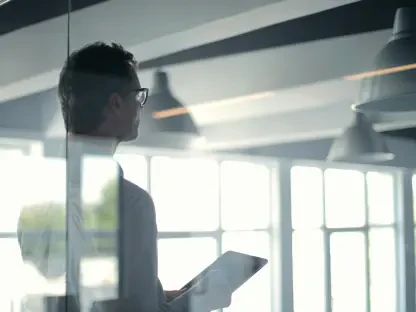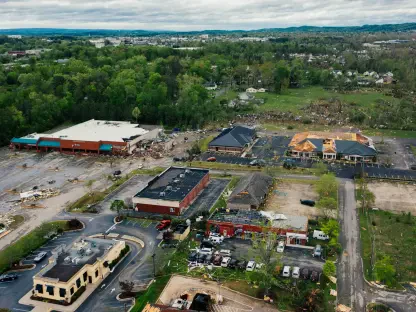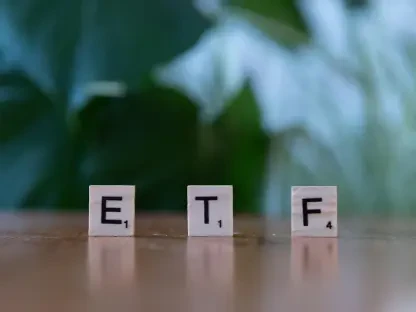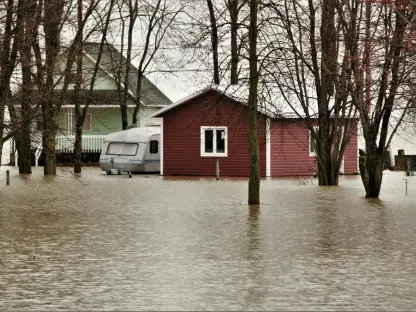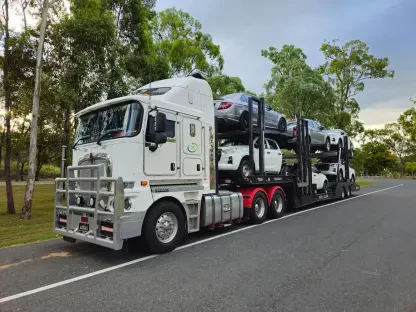Imagine a quiet afternoon at home, only to discover later that a drone has been hovering above, snapping detailed photos of your roof, backyard, and maybe even more personal spaces, all without your direct knowledge or consent. This scenario is becoming increasingly common as insurance companies adopt aerial drones to inspect properties for underwriting and risk assessment. These high-tech tools promise to revolutionize the industry by offering faster, safer ways to evaluate homes, spotting issues like damaged shingles or potential hazards from a bird’s-eye view. Yet, this innovation has ignited a firestorm of debate among homeowners and experts alike. While the efficiency of drones is undeniable, the intrusion into personal space and the potential for misinterpretation of data have raised serious questions. How much privacy are people willing to trade for the supposed benefits of lower costs and quicker disaster response? The balance between technological advancement and individual rights hangs in a delicate, often uneasy equilibrium.
The Rise of Drone Inspections in Insurance
Efficiency and Risk Management
The adoption of drones by insurance providers has fundamentally changed the landscape of property inspections, prioritizing speed and safety in ways traditional methods never could. By capturing high-resolution imagery from above, these devices eliminate the need for inspectors to climb onto roofs or navigate treacherous post-disaster environments, significantly reducing both time and physical risk. After events like hurricanes or wildfires, drones enable rapid assessments of widespread damage, allowing insurers to process claims and allocate resources with unprecedented efficiency. Industry advocates argue that this streamlined approach not only benefits the companies but also trickles down to policyholders through potentially lower operational costs. The ability to inspect multiple properties in a single day without endangering personnel marks a clear advancement over the labor-intensive, on-site evaluations of the past, positioning drones as a vital tool in modern risk management strategies.
Beyond speed, drones play a pivotal role in identifying potential liabilities before they escalate into costly claims, a key aspect of proactive risk management for insurers. Aerial imagery can reveal issues such as deteriorating structures, unprotected pools, or other hazards that might go unnoticed during a ground-level check. By flagging these concerns early, companies can make more informed underwriting decisions, often opting to mitigate risks by requiring repairs or, in some cases, adjusting coverage terms. This data-driven approach aims to minimize financial exposure for insurers, which could, in theory, help stabilize premiums across the board. However, the reliance on such technology also introduces complexities, as homeowners may find themselves facing unexpected policy changes based on findings they cannot easily verify or contest. The promise of cost savings and enhanced safety remains a strong argument, yet it’s tempered by the real-world implications for those on the receiving end of these aerial assessments.
Industry Trends and Adoption
The insurance sector’s growing dependence on drone technology reflects a broader shift toward data-centric decision-making, a trend that has gained momentum over recent years. Initially deployed for large-scale disaster response—think major hurricanes or floods—drones have evolved into a routine component of everyday underwriting processes. Their ability to survey vast areas quickly after catastrophic events has proven invaluable, providing insurers with real-time insights into property conditions without the delays of manual inspections. Industry spokespersons note that this transition, accelerated by significant natural disasters in the past, continues to expand as companies integrate aerial data into standard risk evaluation protocols. The push for efficiency and accuracy has made drones an indispensable asset, aligning with the sector’s ongoing quest to leverage cutting-edge tools for better operational outcomes.
This widespread adoption also signals a cultural shift within the industry, as insurers increasingly view technology as a cornerstone of competitive advantage. Over the past few years, the use of drones has moved beyond emergency scenarios to become a staple in assessing properties for new policies or renewals. This evolution is driven by the need to manage escalating risks in an era of frequent climate-related events, where traditional methods fall short in both scale and speed. The integration of aerial inspections into regular practice underscores a commitment to innovation, with many companies investing in advanced imaging and analytics to refine their assessments. While this trend offers clear benefits in terms of reducing human error and operational costs, it also sets the stage for ongoing debates about the ethical boundaries of such pervasive monitoring. The trajectory of drone use suggests a future where technology and insurance are even more intertwined, raising critical questions about oversight and accountability.
Privacy and Legal Challenges
Homeowner Concerns and Surveillance
As drones become a fixture in insurance inspections, a growing number of homeowners express discomfort with the idea of being monitored from the sky, often without explicit notification. The technology’s ability to capture detailed images of private spaces—backyards, patios, or even through windows—can feel like an invasion, especially when individuals are unaware that an assessment is taking place. This unease is compounded by the potential for drones to record far more than just property conditions, inadvertently documenting personal activities or sensitive details. Many argue that this level of scrutiny crosses a line, transforming a routine evaluation into something akin to surveillance. The psychological impact of feeling watched, even if for legitimate business purposes, has sparked widespread concern among property owners who value their personal space and autonomy.
The sense of intrusion isn’t merely anecdotal; it taps into broader societal anxieties about privacy in an increasingly digital age where technology often outpaces regulation. Homeowners worry not just about what is seen, but how that information might be used or stored by insurance providers. Could images taken for a roof inspection end up in a database, potentially shared or misused beyond the original intent? The lack of transparency around when and how drones are deployed only heightens these fears, as many discover after the fact that their property was under review. This opacity fuels distrust, with some questioning whether the convenience of aerial inspections justifies the erosion of personal boundaries. While insurers maintain that their focus is strictly on risk assessment, the perception of overreach remains a significant hurdle, pushing the conversation toward the need for clearer communication and stronger safeguards to protect individual rights.
Legal Frameworks and Consent Issues
Navigating the legal landscape surrounding drone inspections reveals a complex web of regulations aimed at balancing innovation with privacy protections, though gaps remain evident. In Florida, for instance, the 2015 “Freedom from Unwarranted Surveillance Act” sets boundaries on drone recordings that infringe on a reasonable expectation of privacy, requiring consent for such activities. However, this consent is often embedded in the dense language of insurance contracts, leaving many homeowners unaware that they’ve agreed to aerial monitoring. This raises critical questions about informed consent and whether current laws adequately address the nuances of modern technology. The legal framework, while a step toward protection, struggles to keep pace with the rapid integration of drones, often leaving property owners at a disadvantage when it comes to understanding their rights.
Further complicating the issue is the variability of regulations across different regions, which creates inconsistency in how drone inspections are governed and enforced. In some areas, laws may be more stringent, demanding explicit permission or limiting the scope of data collection, while others offer little oversight, allowing insurers broader leeway. This patchwork of rules can confuse homeowners who might assume uniform protections apply, only to find their specific jurisdiction lacks robust safeguards. Additionally, the fine print in policies often serves as a loophole, with consent clauses buried in lengthy documents that few thoroughly read. The challenge lies in ensuring that legal standards evolve alongside technology, prioritizing transparency so that individuals can make informed decisions about their participation in drone-based assessments. Until such clarity is achieved, the tension between lawful surveillance and personal privacy will likely persist as a point of contention.
Homeowner Experiences and Disputes
Challenges in Contesting Drone Findings
For many homeowners, the fallout from drone inspections can be a frustrating ordeal, particularly when the data collected leads to unexpected policy changes or cancellations that seem unjustified. Take the case of Mike Arman from Florida, who found himself in a bureaucratic tangle after aerial imagery flagged issues with his property. To dispute the findings, he had to compile extensive documentation, including roofing invoices and independent inspector reports, just to prove his home met insurable standards. This process, often time-consuming and costly, places a heavy burden of proof on the individual, who must counteract technology that isn’t always accurate. Factors like the angle of a photo or the time of day can distort perceptions of a property’s condition, yet homeowners frequently lack the resources or expertise to challenge such assessments effectively, leaving them at a significant disadvantage.
The hurdles in contesting drone data also stem from a lack of standardized protocols for appeals, which can vary widely between insurers and exacerbate homeowner frustration. Some companies may offer little guidance on how to submit evidence or dispute a finding, while others impose strict deadlines that are difficult to meet. This inconsistency adds another layer of difficulty for property owners already grappling with the emotional and financial stress of potential policy loss. Moreover, the reliance on aerial imagery often means that nuanced, on-the-ground context—such as recent repairs or temporary conditions—is overlooked in favor of a snapshot that may not tell the whole story. The struggle to rectify these discrepancies highlights a critical flaw in the system: while drones offer efficiency for insurers, they can create inequitable outcomes for those whose lives and livelihoods depend on fair evaluations. Addressing this gap remains essential to rebuilding trust in the process.
Personal Impact and Frustration
Beyond the logistical challenges, the emotional toll of drone-based inspections on homeowners reveals a deeply personal dimension to this technological shift, often marked by a mix of exasperation and disbelief. Stories abound of individuals feeling powerless as their insurance status hangs in the balance over images they cannot control or fully comprehend. The sense of violation—knowing a device has scrutinized one’s private domain without clear warning—can be profoundly unsettling, fostering resentment toward an industry perceived as prioritizing profit over people. For some, the experience transforms a once straightforward relationship with their insurer into a battleground, where every policy renewal becomes a source of anxiety rather than security. This shift in perception underscores how technology, while innovative, can alienate the very customers it aims to serve when not paired with empathy or clear communication.
Adding a layer of complexity, the practical demands placed on homeowners to comply with insurer findings can border on the absurd, further amplifying frustration with the entire process. Mike Arman’s lighthearted recounting of removing a backyard trampoline under insurer orders—joking about needing hazmat suits or bomb-disposal trucks—captures the surreal lengths to which some must go to retain coverage. Such anecdotes, though humorous on the surface, reflect a deeper skepticism about the fairness and reliability of drone assessments. The personal impact extends beyond mere inconvenience, touching on fundamental questions of autonomy and whether individuals should bear the brunt of adapting to a technology they didn’t choose. As these experiences accumulate, they paint a vivid picture of an industry at a crossroads, needing to reconcile the undeniable advantages of drones with the very human concerns of those whose homes are under their watchful gaze.
Balancing Innovation and Trust
Reflecting on the journey of drone integration into the insurance landscape, it’s evident that the technology has brought transformative efficiency and risk management capabilities to an industry once reliant on slower, riskier methods. Insurers swiftly adapted to aerial inspections after major natural disasters demonstrated their value in rapid response and data collection. The past saw a gradual but steady expansion of drone use from emergency scenarios to routine underwriting, driven by a need to cut costs and enhance safety. Homeowners, meanwhile, grappled with the dual reality of benefiting from quicker claim processing while wrestling with the discomfort of unseen surveillance. Legal frameworks, like those in Florida, emerged as early attempts to curb overreach, though their effectiveness often hinged on fine print that many overlooked. This historical tension between progress and privacy set the stage for ongoing debates about fairness in a tech-driven world.
Looking ahead, the path to harmony lies in actionable measures that prioritize transparency and accountability to mend the rift between insurers and homeowners. Establishing clearer guidelines on when and how drones are deployed, coupled with mandatory notifications to property owners, could significantly reduce feelings of intrusion. Insurers might also invest in refining data accuracy, ensuring aerial findings are cross-verified with ground-level context to avoid misinterpretations that unfairly impact policies. Policymakers should consider updating privacy laws to reflect the nuances of modern surveillance tools, guaranteeing that consent is explicit and easily understood. Encouraging dialogue through industry forums or public consultations could further bridge gaps, allowing homeowners a voice in shaping how this technology evolves. Ultimately, fostering trust will depend on a shared commitment to balancing the undeniable benefits of innovation with the fundamental right to personal space, paving the way for a future where efficiency and empathy coexist.
